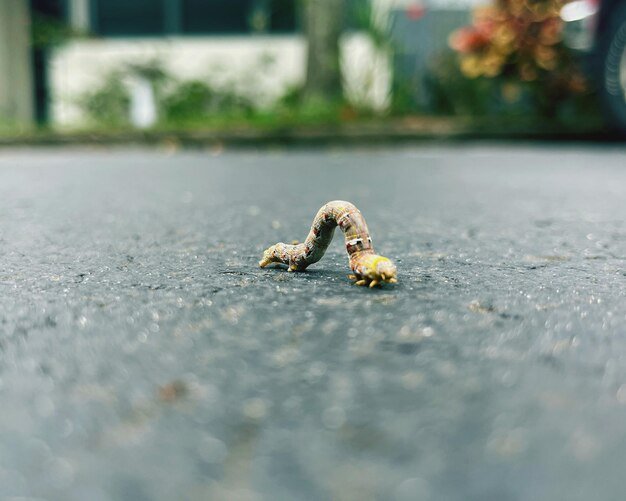
Inchworms, belonging to the Geometridae family, are often seen in gardens, forests, and even at high altitudes. They’re not just cute little critters; their behavior and survival can tell us fascinating stories about their habitats. Understanding how these worms function across various elevations can be quite enlightening. Now, let’s dive into the inchworm’s world and explore how their activities change as they move from the valleys to the peaks.
What Are Inchworms?
Before we get into the nitty-gritty of how elevation impacts their activities, let’s nail down what inchworms are. These tiny caterpillars get their name from the unique way they move—by bending and stretching their bodies, they mimic little measuring devices inching forward. They are often the larval stage of moths and can be found in various shapes and colors, making them quite the sight.
Inchworms are usually green or brown, which helps them blend into their surroundings. This camouflage is critical for avoiding predators. You might have seen them hanging from a branch, ready to drop at a moment’s notice if they sense danger. They’re often mistaken for worms but are actually more closely related to butterflies and moths. These creatures are fascinating not just for their appearance, but also for their role in ecosystems, which changes at different elevations.
The Role of Elevation in Inchworm Activity
Elevations significantly affect the climate and flora of an area. When we talk about **inchworm activity**, we’re discussing how they thrive in various environments. As you ascend in altitude, conditions like temperature, humidity, and even the types of vegetation can shift drastically.
At lower elevations, inchworms may have a more abundance of food sources, such as lush leaves that are easier to reach. Here, they might be more active and visible, crawling on plants to feast. As we get to mid-elevations, the environment changes. The types of plants they feed on dwindle, which can affect their feeding patterns. At this point, you might notice fewer inchworms, as they adapt to their changing surroundings.
Finally, up high in the mountains, the conditions become much harsher. Inchworms that can handle these elevations have unique adaptations. They may have thicker skins or special ways to retain moisture. The environments at such heights can limit their movement and feeding, making their activities more sporadic. Understanding these patterns helps us appreciate their resilience.
Feeding Habits Across Elevations
You might be wondering how these tiny critters manage to eat as they change elevations. When inchworms are at lower altitudes, they dine on a feast of leaves from a wide variety of plants. They particularly love soft, tender shoots, which are abundant in gardens and forests. At this elevation, their **feeding habits** are frequent, and they often move around a lot to find the best food.
As they journey to mid-elevations, their diet can become more specialized. This change happens because the diversity of plants decreases. For example, they might switch from munching on crabapple leaves to nibbling on specific conifers as they climb higher. This adjustment is crucial; without access to suitable food, their populations would dwindle.
At higher elevations, food sources become scarce. Inchworms may have to endure longer periods without feeding. During these times, they may remain hidden to conserve energy and moisture. Surprisingly, this can make them quite resilient. They adapt their feeding strategies, becoming more picky with their bites and timing their movements around the availability of food. This adaptability plays a critical role in their survival.
Temperature Tolerance and Activity Levels
Temperature is a major factor that influences inchworm activity. At lower elevations, the warmth allows them to be more active. You might notice them out in the open, enjoying the heat and munching away. However, as temperature drops with elevation, their activity can decrease.
At mid-elevations, inchworms can experience cooler temperatures at night. This often means they become less active, hiding during the cooler parts of the day. They might seek shelter under leaves or in the crevices of trees to keep warm. Here’s the thing: these small adaptations help them survive.
When inchworms reach high altitudes, they encounter even colder environments. Some species have adapted to this by slowing their metabolism or becoming dormant during the chilliest months. This method allows them to minimize energy loss when temperatures are too low for feeding and movement. It’s a fantastic example of nature’s survival tactics.
Predation and Survival Strategies
The higher you go, the more challenging life can get for inchworms. Predators like birds and other insects are around, ready to take advantage of any inchworm misstep. At lower elevations, their camouflage helps them avoid these threats, but at higher altitudes, survival strategies change.
Inchworms have developed various ways to protect themselves. For instance, some can drop from a branch when they sense danger, hanging by a silk thread until it’s safe to come back up. This instinct is more evident in environments where threats are more pronounced. Their body coloration also helps them blend into their surroundings, making them harder to spot in leaf litter or tree bark.
At higher elevations, their survival depends on their ability to remain unnoticed. The cool, damp conditions can benefit inchworms, creating a foggy atmosphere that helps them hide from predators. These strategies showcase how inchworms have adapted over time to survive in various environments.
Overall Impacts of Elevation on Inchworm Populations
So, what does this all mean for their populations? Honestly, elevation affects not only the behavior of inchworms but also their overall survival rates. When conditions change, such as shifts in climate or habitat loss, the populations of inchworms can fluctuate significantly.
At lower elevations, thriving gardens and forests can support larger populations, while higher elevations tend to see fewer individuals. Inchworms play essential roles in the ecosystem, including serving as food for birds and helping in plant pollination. If their populations decline, the ripple effects can be felt throughout the ecosystem.
Moreover, studying these fluctuations can provide insights into the health of our environments. By monitoring inchworm populations and behaviors at various elevations, we can learn about the larger ecological changes happening around us. Understanding these little creatures helps highlight the importance of preserving their habitats.
Inchworms are more than just charming little creatures waving around on branches. Their activities change dramatically as they move across different elevations, showing us how adaptable and resilient they can be. Whether it’s their feeding habits, temperature tolerances, or survival strategies, these tiny worms reveal a lot about life’s complexities in varying environments.
Next time you spot an inchworm, take a moment to appreciate its journey. From the lush valleys to the crisp mountain tops, they’re a testament to nature’s ability to adapt. So, while they may be small, their impact and story are anything but tiny. As we continue to explore and understand our world, these little creatures remind us of the beauty and complexity of life, even at the highest peaks.

